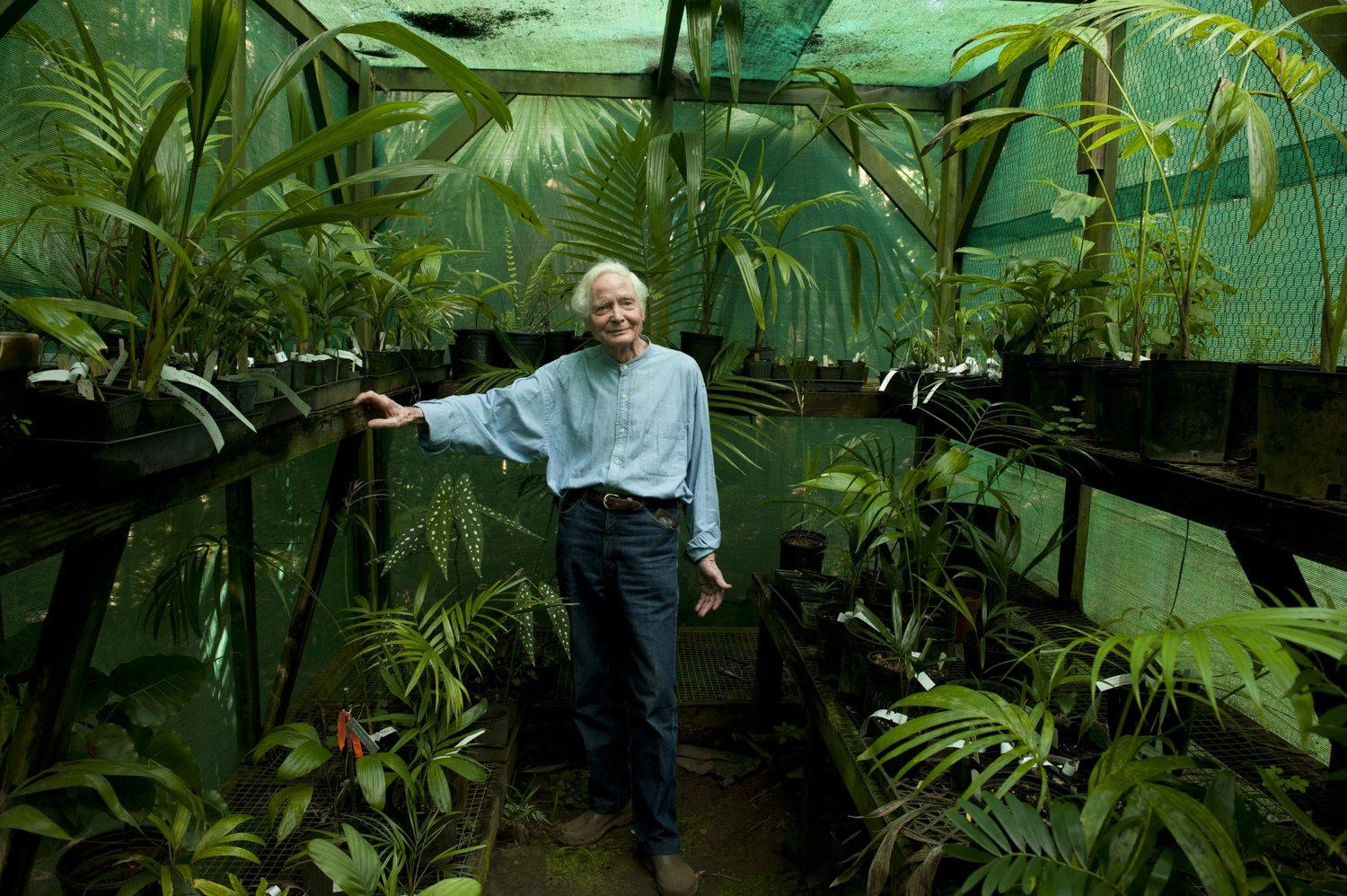
Why Palms?
Dear Friends,
This month, we’ve been making some improvements to W.S. Merwin’s shade house. Down on the valley floor, near the garden shed, William framed the simple rectangular structure, and stretched it with a thick green mesh to shield young palms from Maui sunshine. For decades the shade house has sheltered seedlings—so many in fact, that towering palms now cast their shadows on the heavy mesh, and share the work of filtering the sun.
Up the slope at the house, I’ve been making my way through the first pages of a handwritten manuscript that William wrote late in his life. It’s a memoir of sorts, with two working titles: a small piece of notepaper fixed to the first page by a rusty paperclip reads “The Palm Question,” and “Palmistry.”
The narrative begins where most of William’s days began—on the lanai—and with a recollection of the dry grasses that stretched all the way to the ocean when he first arrived. From his perch in the dense canopy, he details the drastically altered landscape before him:
Now when I look up from the table, or look out from every side of the house, I see a waving screen of leaves, their green upper sides white with the sunlight. Each palm I planted myself—in the beginning growing most of them from seed acquired from botanical gardens and palm seed distributors throughout the tropics—and grew in a nursery and then planted out on land that still, according to the county records, is “wasteland.” And there the question begins: why palms?

A few pages in, William writes of his initial conversation with the head gardener of Lyon Arboretum, where William sought guidance to fulfill his initial intention: to restore a native Hawaiian forest here on a barren parcel. Though he was cautioned that the land had been too badly disturbed for such a gesture to find success, the gardener—who was soon to become a lifelong friend—offered an idea:
Palms, he suggested, had a mystery of their own, and palms from other places, as I was learning, were endangered everywhere in their native places. So on every trip Paula and I made to Honolulu I took a carton or two packed with small palms in plastic pots.
William writes next of a burgeoning correspondence with botanic gardens and palm societies, of sourcing wild-collected seed from them, and of how those seeds came to take root here in his garden. In time, the seedlings were moved down to the shade house:
I potted up the seeds that had sprouted in the attic, re-potted them into larger pots. From there they were taken to the shaded nursery shelves in the screen house until they were ready to be planted out in the garden.
I’m only halfway through “The Palm Question,” and in the weeks and months ahead, I’ll take in the details of the next part of the story: the keiki palms will grow up in the shade house and take root across the land William and Paula came to steward across the valley. Then, we will begin to imagine what palms we will grow up in the updated shade house in the years ahead—the native loulu we hope to offer to Lāhainā leaders and community members, and the palms that we’ll plant in the acres beyond the reach of William’s hand-carried watering buckets.
I turn to a beautiful reflection offered by biologist and 2023 Merwin Conservancy resident Dr. William Baker, on his first visit to the palm garden in 2017:
A remarkable thing has been achieved by William and his helpers. Life has been returned to the land in the form of a functional, international rainforest. This is good for the soul, but it also opens doors to earthier opportunities to share the thrill of the tropics and create knowledge for science and horticulture. This uniquely special forest compels thinkers and learners of all kinds to enter, pause and listen to nature. Has there ever been a greater need for such a place?
With warmest wishes,
Sonnet